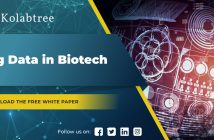Urban planners currently depend on data to learn about housing trends, transportation habits, the most frequently used areas and more. Entire smart cities are based on data science and IoT. It won’t be long before data is the primary element that helps officials make decisions about citizens and their needs. In some places, that’s already happening. The link between data and smart cities is getting stronger by the day, allowing us to build cities that are not just smart but safer and friendlier.
Combining Data With Context
Although modern society has some extremely robust big data platforms, they often fail to provide the context needed to determine the full meaning of statistics. For example, a noise sensor might show an extraordinary amount of loudness on a certain date, and big data analytics could confirm that the noise issues have never been quite so extreme previously.
However, what impact does it have on citizens, and how can city representatives find that out unless citizens used a platform that allowed residents to weigh in on how the sounds they heard adversely affected their lives? The technique of blending statistical insights with context collectively results in thick data.
Residents of Plaça del Sol in Barcelona were approached in 2017 by activists looking to use technology to spur positive change: in this case, to control the noise levels in the neighbourhood. They needed participants for a project titled Making Sense, funded by the European Commission. The goal was to give people noise sensors they could use to measure levels of sound pollution in their area, compare the readings to established permissible levels and use the data to put pressure on city representatives to make improvements. The dozens of people who took part in the project periodically met face to face in a workshop space to collectively figure out how to bring about solutions. Those gatherings turned noise issues into a group concern, not just one grumbled about by individuals in their homes. The data collected is being used to measure and analyze the problem, and find sensible solutions to it.
Data Sharing Could Present New Opportunities
Some people who analyze the potential for data usage in cities point out that it’ll be significantly easier to meet goals if planners share information with other officials elsewhere. Then, they’ll be able to see whether the things they’re doing are working as well as they should or if different cities came up with superior methods.
Such collaborations could become easier thanks to a March 2018 development involving a framework released by The Alliance for Telecommunications Industry Solutions (ATIS). The information suggests ways for cities to develop their data sharing ecosystems and facilitate secure transfers of the Internet of Things (IoT) data between trusted parties. It’s also part of a broader effort by ATIS representatives to encourage city representatives to explore ways to utilize and monetize data.
Open Data and Smart Cities
Although some kinds of confidential data must remain secure and only be viewed by authorized representatives, some cities are also experimenting with open data. Not surprisingly based on the name, it’s data that’s accessible for anyone to see and use regardless of restrictions.
Officials in London released over 80 open feeds for Transport For London (TfL) data. In turn, developers reportedly added select content to more than 600 apps used by 42 percent of Londoners. The decision to offer open data gave a substantial economic boost to the city, but it has educational purposes as well. Some beginning coders and school programs use the data to stimulate learning.
Elsewhere in the United Kingdom, the Manchester City Council offers open data, too, but only after considering it against criteria such as whether there’s a demand for the information and whether the content is valuable.
Data as Fuel to the Economy
The rising prominence of data collection in cities also creates business opportunities for forward-thinking start-up companies that figure out how to appeal to the needs and challenges city planners face.
One of them is a San Francisco-based company called Compology. It uses IoT sensors on city-owned trash collection containers that detect fullness levels and signal to garbage truck companies when it’s time to empty them.
According to Compology, such an approach could cut waste management costs by 40 percent. Plus, the company doesn’t require city officials to replace their existing bins. Instead, they can simply attach the sensors to the containers they already have, allowing technology usage via an investment that’s less than some people might expect.
Then, there’s Upshift, another San Francisco business that allows people to send text messages and request Prius vehicles that arrive in as little as an hour. When people receive them, the cars are clean and have full tanks of gas. Then, once drivers finish with the automobiles, they merely have to park them anywhere in Upshift’s designated delivery zone.
Such a system could encourage people living in smart cities to become more dependent on borrowed vehicles instead of owning cars. After all, one of Upshift’s main selling points is that the subscription plans for the service cost as much as car insurance premiums or less.
Although Upshift’s business model doesn’t seemingly rely on data as much as Compology, it appears to be engaging in data collection for planning its eventual expansion outside of San Francisco. Visitors to the company’s website can click a blue “Tell Us Where to Expand” button and type in a location name. Then, they input their email addresses to get notifications about when or if Upshift moves to that place.
Data Could Improve Safety
The most advanced smart cities won’t attract potential residents if those people don’t feel safe when they evaluate the places. Plus, those currently living there might move away if safety issues threaten their enjoyment of life and peace of mind.
Many plans for smart cities include measures that capture traffic data and help law enforcement officers notice drivers acting recklessly.
Representatives for the city of Coimbatore in India hope to purchase 1,093 cameras for all-encompassing surveillance. Some of them will measure how fast cars travel, while others detect license plate data. Footage of speeding drivers gets sent to a centralized control facility, and those deemed to be breaking the law get tickets issued in the mail.
Officials want to go beyond traffic infractions and look for other evidence of crimes with the cameras, too. But, some of the technology will measure the amount of traffic at stoplights and use that data to trigger lights to change to promote adequate traffic flow.
Data from Juniper Research indicates that such intelligent traffic systems (ITS) could shave ten percent off of the average commute time of 74 minutes. That same study also found it’s advantageous for emergency response teams to coordinate their efforts depending on what compiled traffic data indicates.
By using data to give emergency vehicles priority on the roads and rerouting regular traffic, the response times of paramedics, fire crews and similar teams could shorten by up to 50 percent. So, when citizens find themselves in distress, their chances of survival theoretically go up.
Concerning safety associated with violent crime reduction, smart data platforms that utilize machine learning to predict crime before it occurs could make it so that up to three million incidents never happen each year.
Not only is smart city data concerned with crime and traffic safety, it has been discussed that data can help make cities more digitally inclusive and accessible. Data, when used in collaboration with the latest in mobile and emerging technologies, can help make the city a safer space for those with disabilities and help make sure buildings are accessible up to date when it comes to codes and regulations.
Data and Smart Cities: A Promising and Essential Combination
Smart cities aren’t actually very intelligent if data analysis isn’t part of the equation. Information helps city officials choose areas of focus and highlight areas for improvement. Even though smart city data uses are still emerging, the amount of progress already made and the potential for the future are both immensely hopeful.
—-
Need to consult a data science expert? Hire from over 5,000 freelance scientists on Kolabtree.







